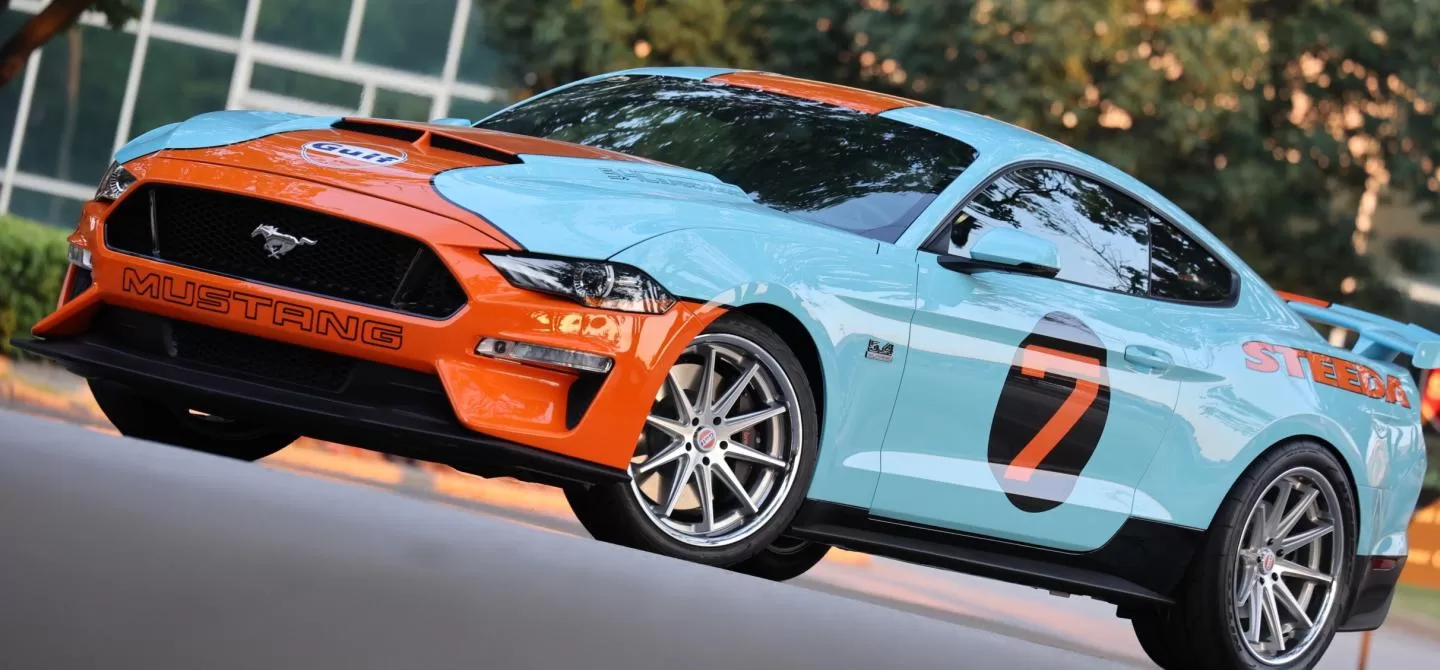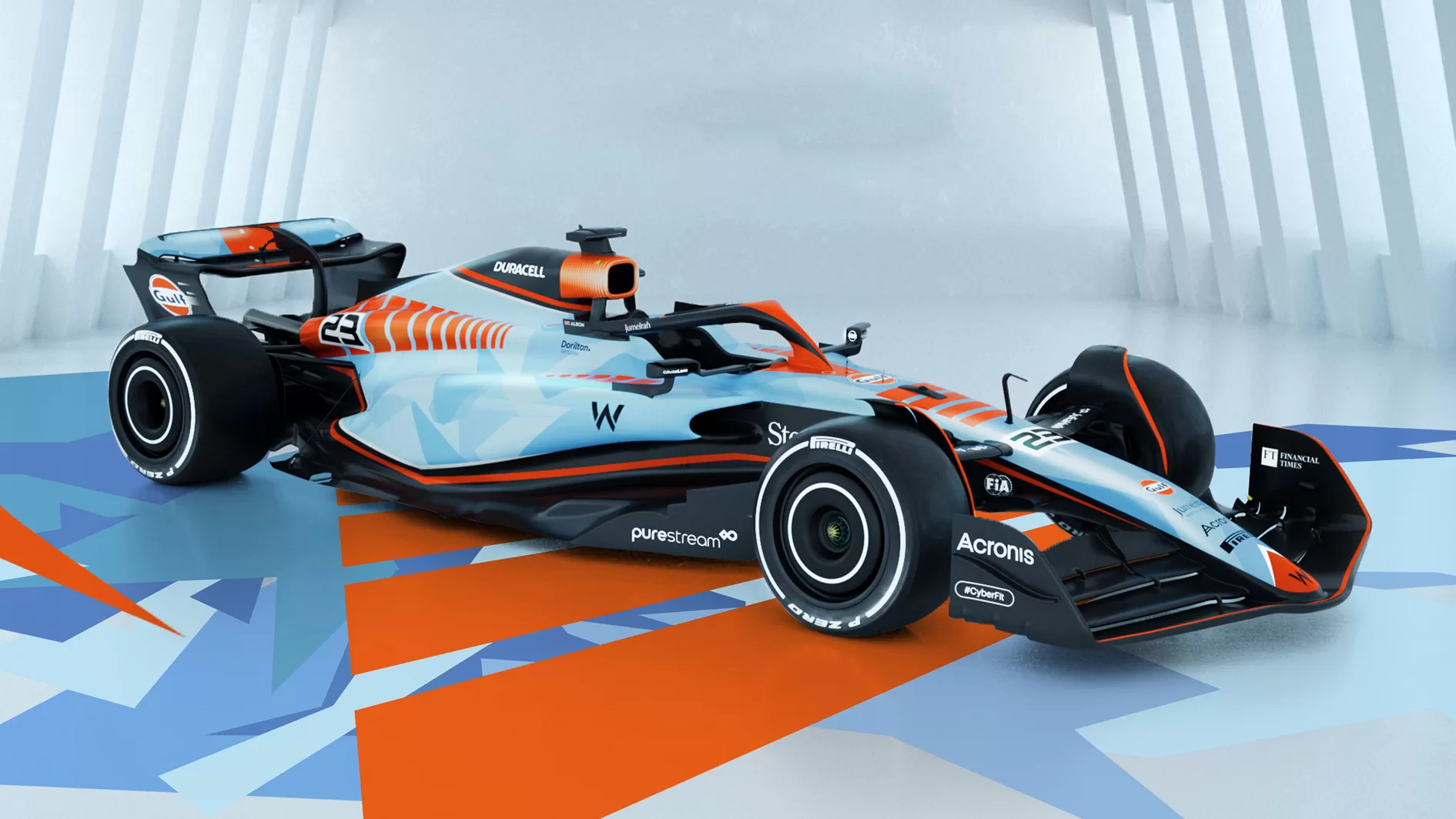The Gulf livery is one of the most iconic color schemes in motorsport history, instantly recognizable by its light blue and orange colors. It represents a legacy of speed, endurance, and success, and continues to be a fan favorite worldwide. This livery originated from Gulf Oil’s sponsorship of racing teams and has since become a symbol of motorsport heritage.

Gulf Livery Cars
Over the years, numerous high-performance cars have donned the Gulf livery, each becoming a part of this storied tradition. The sight of the distinctive blue and orange colors on a speeding car often brings a sense of nostalgia and excitement to motorsport enthusiasts. Here we explore some notable examples of racing livery cars from different manufacturers.
Gulf Livery Porsche
Porsche and the Gulf livery share a rich history, most notably with the Porsche 917. This legendary race car achieved great success in the early 1970s, including outright wins at the 24 Hours of Le Mans in 1970 and 1971. The Porsche 917 in racing livery has since become an emblem of Porsche’s racing prowess. It’s not only limited to the 917; other models, like the Porsche 911, have also sported the Gulf colors in various racing events, continuing the bond between Porsche and this distinctive color scheme.
Gulf Livery McLaren
McLaren, another stalwart of the racing world, has also embraced the Gulf livery in their storied history. The McLaren F1 GTR, which competed in the BPR Global GT Series and at Le Mans, famously wore the Gulf colors. More recently, McLaren renewed their partnership with Gulf Oil, and this collaboration was celebrated with a special edition Gulf-liveried McLaren Elva, a testament to the enduring appeal of the Gulf colors in modern motorsport.
Gulf Livery Williams
Williams, a name synonymous with Formula 1, has had less association with the Gulf livery compared to the likes of Porsche and McLaren. However, that doesn’t mean the iconic colors haven’t graced a Williams chassis. The privateer team, Gulf Racing, entered a Williams FW07 in the British Aurora AFX Formula One series in 1979 and 1980, presenting a rare sight of a Gulf-liveried Williams car.

Gulf Livery History
The history of the Gulf livery dates back to the 1960s when Gulf Oil first sponsored the John Wyer Automotive team. The livery made its debut on the Ford GT40, achieving its first Le Mans victory in 1968. This initial success cemented the Gulf livery’s place in the racing world. Leading to its association with various other teams and vehicles over the years. The choice of colors was practical as much as it was aesthetic. The pale blue and marigold orange were highly visible at speed and became synonymous with racing excellence.
Gulf Livery Hot Wheels
The racing livery has transcended real-world motorsport and entered the realms of popular culture and collectibles. Hot Wheels, the miniature die-cast toy cars, have released several models adorned with the Gulf colors. Catering to collectors and enthusiasts who appreciate the livery’s storied past. These Hot Wheels cars offer a tangible piece of racing history that can be enjoyed by all ages. Whether for play or display.
In summary, the racing livery is more than just a color scheme. It’s a symbol of racing heritage that has graced some of the most successful and celebrated cars in motorsport history. From the Le Mans-conquering Porsche 917 to the special edition McLaren Elva. The Gulf colors continue to be revered by fans and drivers alike. Its history is a tapestry of victories and partnerships. And its presence in popular collectibles like Hot Wheels cars cements its status in the culture of motorsport. The racing livery represents a golden era of racing and remains a beloved and enduring icon in the automotive world.





